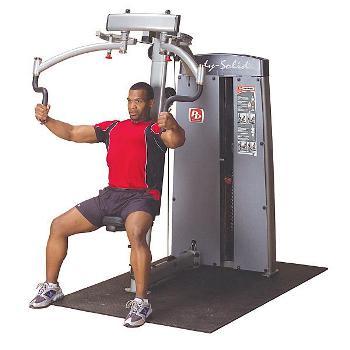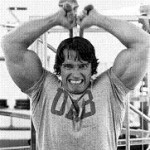Often times I hear someone posing the question of whether machines at the gym are worth using, because they’ve “heard” people say that they won’t grow if they train dependent on them. That machines provide no benefit, and if they do have a benefit, it is quickly outweighed by the more abundant benefits of free weights. Although using free weights is indeed superior, it certainly does not shut the door on machines being an effective source in your training. In order for them to be effective, however, you have to understand how to use them to your advantage in certain situations when you train. The problem with this is that most people don’t have such an understanding, and therefore the overall rumor of machines being rather useless is given some credence. Machines very well have their place, it’s just a matter of knowing how to get the best out of them. Therefore, the topic should never be free weights vs. machines, but rather how one can supplement the other in a good training regimen.
To begin our free weights vs. machines battle, let’s knock the most absurd claim out of the way first.
You can’t grow using machines. – I don’t really understand how this even became such a raging inferno in some parts of the training community, but it does provide a few laughs for those educated in even the most rudimentary understanding of fitness. In order to grow muscle, an individual must challenge that muscle to its limit. They must overload it with stress, signaling to the body that it is time for that muscle to get bigger in order to handle that new stress. This is an ongoing cycle which a successful trainee engages in on a weekly basis, called Progressive Overload. As long as the individual’s diet is on point, what causes that stress (whether it is a dumbbell or a machine) is largely irrelevant. Therefore the bottom line is, if you are constantly moving up in weight on a machine from each training session to the next, and eating above your maintenance calories, you will grow.
The problem with machines in this regard, however, is that they only allow for a single range of motion (ROM). This causes several issues:
a) Your stabilizing muscles are thrown out of the equation – to understand this best, imagine using a machine aimed at working your chest in the same manner as a flat bench press. The machine is only going one particular way based on its wiring, which means that you don’t have to worry about making sure it doesn’t veer off to the side or anything of the sort, like a dumbbell or barbell. That means that those stabilizing muscles which allow you, during a flat bench press, to keep your barbell stable enough for you to do the exercise are not required when using a machine (since the machine does it for you). These important muscles are not used, and therefore, this is the single greatest reason why doing a ton more weight on a machine is irrelevant when speaking of how much you can ____ (insert exercise here).
b) Higher risk of injury – due to the severely limited range of motion on a machine, a person is forced to do the movement only that particular way. If a supporting muscle falters even slightly during a regular bench press, your arm and chest have a free range of motion to recover. On a machine, there is no such free range which means that the weight can override that muscle and force your body to jerk to finish the rep, under the weight’s strain applied in an unnatural manner to that same muscle. Essentially, if you are dying out on a last rep or two of a set and you’re using a machine, you can’t help yourself to finish those reps without changing the way you’re applying the force to move the weight. Whereas with free weights, you adjust without obstruction, it is the opposite on a machine that can only move the weight in one specific way. If your chest gives out, this may put unnecessary stress on your front shoulder to finish the rep, the problem with this is that now that your shoulder becomes the primary mover for a second or two, it is still in the position of a supporting muscle as this weight comes over it. You, unlike when using free weights, cannot adjust because of the rigidness of the machine.
Due to these limits of machines, it is easy to see that although one can certainly grow using them, they are not exercises that you should be doing as your primary movers for the day. Leave them as a supplement, thrown in during the middle or towards the end of your workouts. To get the most out of a machine exercise, you have to double up on your Mind Muscle Connection and make sure you really focus hard on using that particular muscle that is being targeted to push the weight. Anything less and you’re setting yourself up for trouble as discussed above, and not using the machine to your advantage by hitting the muscle as hard as you can since other muscles will come in to help out and ultimately lesson the load on the primary mover you’re targeting for that exercise. (Although this is important for any exercise, it is even more so when on a machine with such a restricted range of motion).
In the battle of free weights vs. machines, machines certainly have their place. The individual using them, however, must know of their limitations and understand they should be nothing more than a supplement (outside of an odd day when you decide to switch it up). They certainly can help your goals, but they are not essential. They are, however, very convenient and with the right Mind-Muscle Connection all that machine weight can be easily transferred onto the muscle you’re targeting, hitting it very well (as even the stabilizers have been taken out of the movement). It’s all about putting them into use in the ways they were meant to be, and not just sitting down on them, doing the movement, and hoping for the best. Good luck!








One Comment »